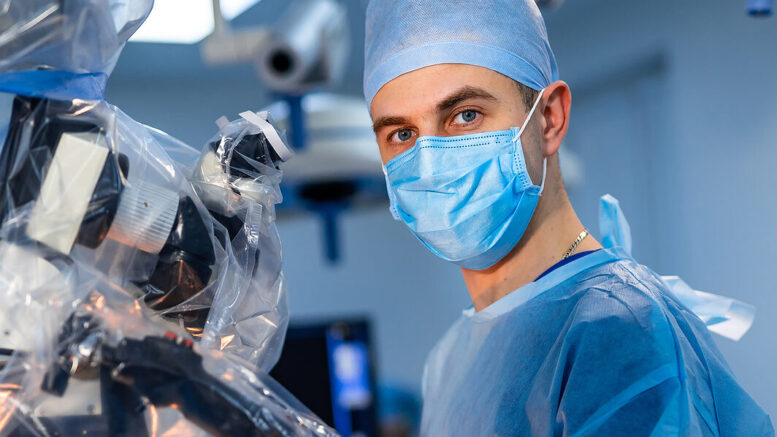HVAUMM: Could you tell us a little about your history with Minerva Surgical and your journey into the world of healthcare supply chain and value analysis with your innovative devices?
D. Hammers: Minerva Surgical was founded by a team of experienced serial entrepreneurs with over 30 years of expertise in Women’s Health. Throughout their careers, they have developed medical devices such as NovaSure, EnSeal, and Symphion, among others. Their core philosophy is to ensure that each innovation represents a significant advancement, providing a noticeable improvement in safety and efficacy compared to existing solutions. Minerva Surgical’s current product portfolio reflects this commitment, offering top-tier solutions aimed at addressing the causes of abnormal uterine bleeding.
HVAUMM: What most people don’t realize about manufacturers like Minerva Surgical is that you follow Value Analysis and Value Engineering techniques when designing and building your devices even before you engage with the healthcare marketplace. Can you tell us how your design team works through their value analysis process to bring these breakthrough devices to healthcare practitioners?
D. Hammers: The development of a new medical device extends far beyond identifying a technical solution for an unmet need. It’s a highly complex process that considers various factors, such as the potential difficulty of use in relation to the typical skill set of the end user, the projected cost of the device, and its environmental impact throughout its development, manufacturing, usage, and disposal, among others. While creating the technical solution may be a straightforward engineering task, these additional considerations act as crucial constraints that the solution must adhere to.
At Minerva Surgical, we take a more holistic, comprehensive, and long-term view when it comes to cost. We focus not only on the initial purchase price of a product, but also on the true cost of its usage for both the customer and the healthcare system. Often-overlooked expenses—such as time, device reliability, the potential need for future surgical reinterventions, additional consumables (like distention media), and disposal costs—are all factored into our planning from the outset of every project. This ensures that our solutions consistently meet and exceed rigorous value analysis standards.
HVAUMM: It is challenging for Value Analysis Teams to approve new products for existing cases, but they will consider new and innovative devices that solve problems they are experiencing and/or greatly enhance patient outcomes. Can you explain what problems your devices solve and how they improve the outcomes?
D. Hammers: It’s true that many medical conditions already have reasonably effective surgical management options. However, the use of technical innovations to address the safety and efficacy gaps in existing solutions is a key driver of medical device evolution. At Minerva Surgical, our philosophy revolves around developing solutions that significantly improve safety and efficacy.
Let me provide a few examples:
Take the Minerva ES Endometrial Ablation System, for instance. It incorporates a unique two-stage uterine integrity safety check alongside an innovative approach to tissue ablation. Unlike any other system, the Minerva ES employs three different methods of tissue ablation simultaneously: Bi-polar RF, direct thermal energy transfer from the membrane into the tissue, and ablation through intracavitary fluids. When heated, these fluids achieve ablative effects in areas not in direct contact with the device. During the 2-minute ablation, all three methods work in tandem, with each method’s prominence adapting to the specific anatomy of the uterine cavity. This multi-faceted approach has demonstrated statistically significant superiority compared to other solutions and results in the lowest rate of long-term reintervention.
Looking at the Symphion system, its use of bi-polar RF current dramatically accelerates tissue resection while simultaneously coagulating the microcirculatory bed. This reduces bleeding and lowers the risk of fluid intravasation. Additionally, the closed-circuit distention media filtration and reuse system virtually eliminates the risk of fluid overload—one of the most dangerous complications in hysteroscopic surgery.
These are just two examples, but they highlight how Minerva Surgical’s range of devices is meticulously designed, with patient safety and procedural efficacy as our top priorities.
HVAUMM: Could you give us an example of how you worked through a value analysis review that provided thought provoking insights you didn’t even realize about your devices that the VA Team uncovered?
D. Hammers: That’s an interesting question, and the answer highlights that even the most comprehensive analysis can still lead to unexpected outcomes. Fortunately for Minerva Surgical, these surprises turned out to be positive ones.
During one of the assessments of the Symphion system, we realized that its small number of components required for a procedure, though initially underappreciated, became a significant advantage. This simplification of internal inventory logistics proved to be a considerable benefit. While this aspect was not fully recognized in our initial evaluations, its impact was highly positive.
As a result, Minerva Surgical has now incorporated this design input as a priority in the early stages of future device development, ensuring that inventory simplicity and efficiency remain key considerations in our innovation process.
HVAUMM: Value Analysis is the study of function of products, services, and technologies. What are important functional attributes, or should we call them X-factors, that Value Analysis Professionals should know about Minerva Surgical Devices?
D. Hammers: I believe that members of the Value Analysis Committee should approach the review process with a structured, methodologically sound framework, incorporating variable weighted factors to minimize or eliminate subjectivity. When evaluating the Minerva Surgical portfolio, several key criteria should be considered:
- Safety: The groundbreaking safety features of both the Minerva ES and Symphion, combined with the proven safety record of Genesys HTA, make these technologies strong contenders. It is crucial to evaluate safety not only under ideal usage conditions but also in scenarios where unintended or uninformed deviations may occur. The question should be: do these systems have built-in safeguards to maintain patient safety even under such circumstances? For Minerva Surgical devices, the answer is a clear yes.
- Efficacy: Minerva ES has demonstrated superior short- and long-term outcomes compared to other endometrial ablation systems, excelling in rates of success, amenorrhea, patient satisfaction, and long-term re-intervention avoidance. Genesys HTA stands out with its ability to treat patient populations that other technologies cannot. Symphion offers the highest tissue removal rates, resulting in less bleeding, reduced fluid intravasation, shorter procedure times, and numerous other advantages.
- Clinical Data Credibility: It’s vital to rely on objective, verified data rather than manufacturer-driven or marketing-sponsored studies. Only FDA-approved data, as available in open-source formats, and credible peer-reviewed publications should be used in the evaluation of these devices. This ensures that decisions are grounded in unbiased, validated information.
- Cost: Despite their superior safety and efficacy, Minerva Surgical’s solutions remain cost-competitive, with increasing adoption across the U.S. However, a comprehensive cost analysis should go beyond device pricing to consider the overall cost of the procedure. In many cases, older technologies may have a slightly lower upfront price but end up consuming more resources during the procedure. Therefore, it’s essential to focus on “procedure cost” rather than just “device cost” for a more accurate assessment.
- Reputation: Reputation is a critical factor for medical facilities, which often promote their use of the most advanced, safe, and effective technologies. Offering Minerva Surgical’s product line enhances this reputation, providing institutions with a competitive edge in delivering cutting-edge care.
While other factors may also play a role, the fundamental truth remains: Innovation drives progress, and the adoption of new technologies is inevitable. The choice is whether to lead the charge at the forefront of this advancement or lag behind as a follower. Personally, I prefer to lead.
Darin Hammers, President and CEO, Minerva Surgical
Darin Hammers is a strategic senior executive with vast leadership experience in the medical device and business-to-business arenas with global companies such as Cogentix Medical, CR Bard, Boston Scientific, Johnson and Johnson, and NCR Corporation.
Experienced in leading organizations that have spanned over nine segments within the medical device field, Darin draws upon an expansive network of contacts that include key opinion leaders, hospital executives, and group purchasing organization leadership.
A strategic thinker, he is adept at sales strategy development and execution, strategic planning, process management, and the development and retention of people.
Articles you may like:





